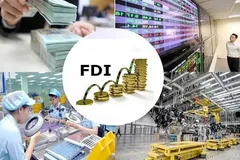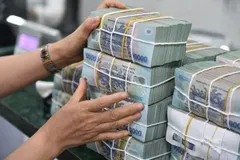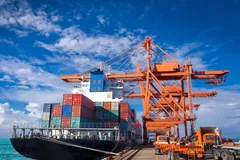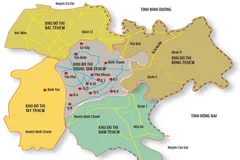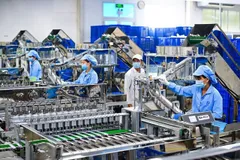
XI JINPING and Donald Trump claim to be fond of each other. After a year of spiralling disputes between America and China, their professions of friendship are hard to believe. But it is true that whenever they get together, they usually succeed in stabilising their countries’ relationship, at least for a time. Their meeting on June 29th, on the sidelines of the G20 summit in Osaka, appears to have delivered again.
The two superpowers agreed to resume their on-again, off-again trade negotiations, and America desisted from applying further tariffs. That is a welcome respite for global markets and companies, and indeed for anyone who hopes that China and America can find a way to avoid a new cold war.
Nevertheless, it is also true that the periods of calm after previous Xi-Trump meetings have only lasted so long, and have ultimately been followed by a progressive escalation of the trade war. Whether that happens this time will hinge on the negotiations that are set to begin anew. There are many reasons for pessimism and one for guarded optimism.
Details of what the leaders agreed during their 80-minute meeting are still scant. The biggest surprise was Mr Trump’s statement at a subsequent press conference that America would permit its tech companies to continue selling components to Huawei, a Chinese telecoms giant, an apparent reversal of an earlier decision to blacklist it. That is a big reprieve for Huawei, and a victory for Mr Xi. But Mr Trump also suggested that a final decision on how to handle Huawei would rest on the fate of the trade talks.
America’s decision to hold off on further tariffs had been expected, because China had made that a precondition for the resumption of talks. But it is important all the same. America has so far levied tariffs of 25% on $250bn-worth of Chinese imports, about half of what China sells to America. Mr Trump had threatened to slap tariffs on almost all remaining Chinese imports if the talks with Mr Xi went badly. Chinese officials, for their part, emphasised the leaders’ agreement that talks would proceed “on the basis of equality and mutual respect”, wording that helps address their complaint that America was making one-sided demands.
Yet one obvious lesson from the past year is that it will be exceedingly tough to reach a true deal. The longer the dispute goes on, the more intractable it seems to get. At the outset Mr Trump dwelled on China’s gaping trade surplus with America. But it soon became clear that his combative approach had uncorked a range of long-held American grievances. Among the issues to have figured in the talks: restrictions on foreign firms’ access to the Chinese market, China’s shoddy protection of intellectual property and the range of subsidies that underpin China’s economic model.
The commercial conflict has also laid bare a rivalry over technology that is destined only to get more intense. Even if America and China manage to roll back tariffs, these are just one part of their increasingly sprawling confrontation. Chinese investors and researchers in America face more restrictions and scrutiny. China has said it will blacklist foreign companies that cut off supplies to its firms. Both countries are developing plans specifically aimed at curbing technological reliance on the other.
In some ways, too, the political dynamics have become worse. Mr Trump is heading into an election year and does not want to appear soft on China. In China itself the field has tilted in favour of those advocating a more unyielding stance. Since the breakdown in trade talks in early May, state media have unleashed a bombardment of commentaries that are highly critical of America.
Many assume that as the cost of the trade war rises—whether in the form of slower growth or sputtering markets—cooler heads will prevail. But Mr Trump so far likes what he sees. American stocks just notched up their best first-half performance in more than two decades (largely thanks to the Federal Reserve’s signalling that it will cut interest rates). China has felt more pain from the trade war, but its fiscal and monetary policies are also shifting in a pro-growth direction. So for the time being, both countries may feel emboldened rather than constrained by their economies.
The one reason for cautious optimism is that the new round of talks should be grounded in greater realism. The breakdown in early May occurred when Chinese negotiators insisted on major revisions to a deal that the Americans thought was nearly done. It is not known whether there had been a change of heart on the Chinese side—a feeling that they had given away too much—or whether it was a negotiating tactic, a last-minute rollback of promises.
In either case the deep freeze in talks over the past two months has not been a total waste. China has laid out its position more explicitly than before, making three core demands: America must scrap all tariffs imposed on China since the start of the trade war; commitments to buy more American goods must be “realistic”; and the text of the final deal must be balanced, not just a list of Chinese concessions. The American side has long been clear about what it wants from China: credible commitments both to reduce its trade surplus and reform its economic policies, backed up by enforcement mechanisms if it fails to do so.
Chinese and American officials should have a good idea by now of the scope of an eventual agreement. That they are ready to resume talks suggests they think a deal is possible. But if the result is yet another breakdown, no one should be surprised.






